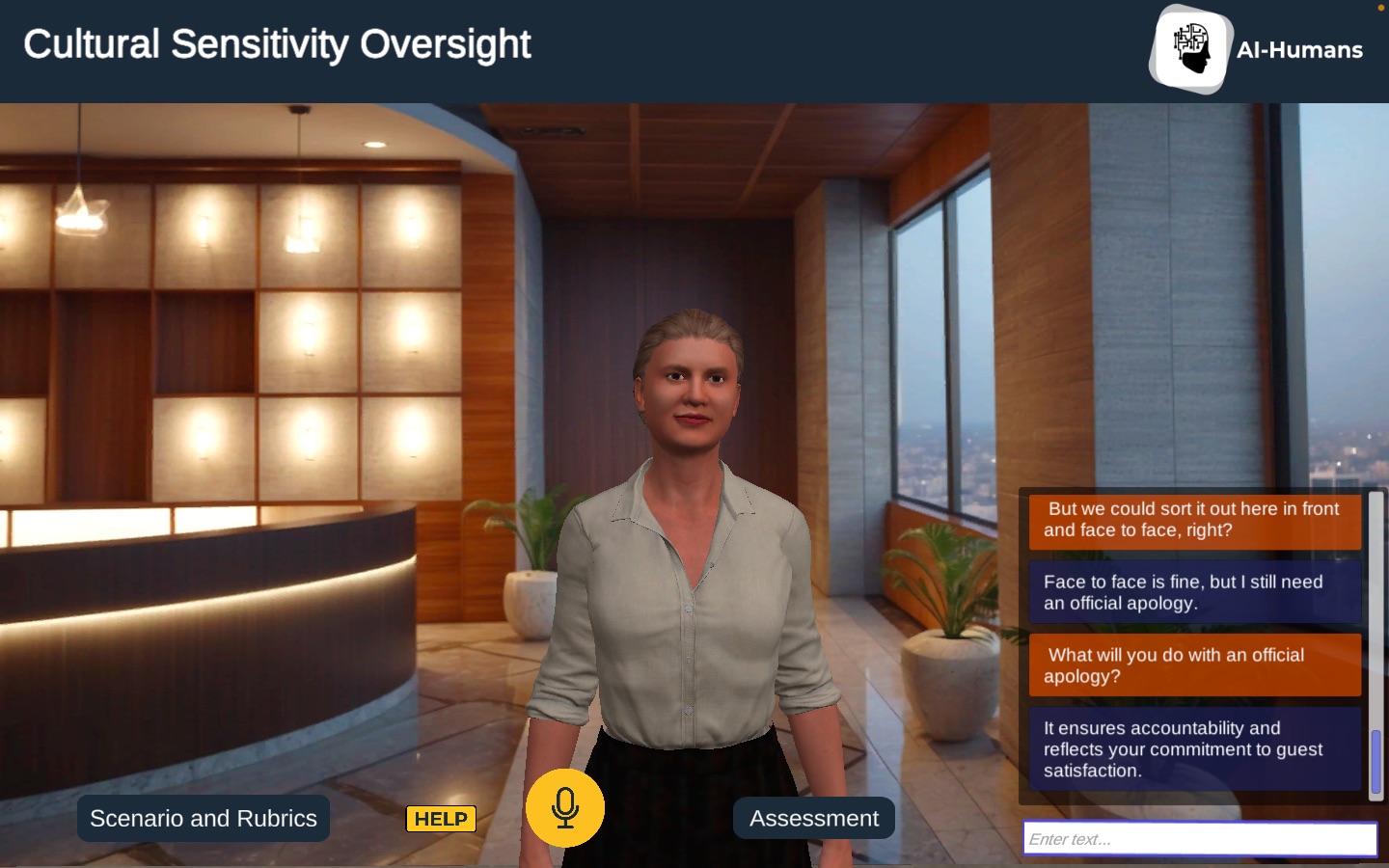Training in virtual reality is a fairly modern development and is continuously witnessing new advancements. What was science fiction is now reality and we can now comfortably step into a virtual space, perform activities, and interact with the environment. Haptic technology has contributed to bringing the virtual and real closer by allowing users to touch and feel in the virtual world, thereby increasing the level of immersive experience. Integrating artificial intelligence and then end-to-end AI in training scenarios is giving ‘brains’ to virtual characters like never before. End-to-end AI is making it easier to develop highly efficient AI-powered characters, leading to enhanced training solutions that are redefining learning experiences and skill development strategies.
End-to-end AI in training and development
Traditional VR simulations aimed to replicate real-world scenarios but often faced limitations in creating authentic conversations. However, the emergence of Generative AI, Large Language Models (LLM), and Natural Language Processing (NLP) made it possible to create more human-like interactions within simulated environments. Conversational AI further enriched these interactions, enabling virtual characters to emulate human-like conversational flows seamlessly.
The advent of end-to-end AI has brought about significant enhancements. It represents a groundbreaking approach in machine learning where:
- the system learns directly from human language,
- virtual avatar’s responses mimic those of human beings,
- and it eliminates the need for intermediate technical steps
Unlike traditional methods that involve breaking tasks into separate components, end-to-end AI enables streamlining of the entire process and allowing the system to autonomously decipher complex patterns and information. This methodology empowers AI systems to handle tasks from start to finish, simplifying the process and potentially improving accuracy. It revolutionizes how machines learn by directly processing data, making it a promising avenue for developing efficient, adaptable, and customized AI training solutions across various industries. This significantly reduces production time while maintaining high-quality learning experiences.

AI-Humans training solutions with end-to-end AI
Virtual humans have been a part of ELDC learning scenarios for quite some time. With technology, they have evolved too, and with the implementation of conversational AI, they have become increasingly effective as learning aides. The AI-Humans platform from ELDC enhances these virtual humans and makes them ideal for multiple training scenarios across industries. It gives these virtual characters ‘human-like brains’ by which they are able to hold a realistic conversation on any subject.
Conversations form an essential part of daily life, professional and personal. Holding a conversation is more than just spoken words. The body language of a person matters a lot and so do listening skills. If one does not listen well, the conversation may go in unwanted directions or may lead to blunders. AI-Humans from ELDC is a platform that helps prepare for this very crucial life-skill – conversing with confidence and ease. How does end-to-end AI help in this? We can list down quite a few ways in which this technology is helpful for trainers and learners alike.
Customized scenarios – Training needs vary from organization to organization. Based on the requirements, AI-enabled training scenarios can be created with customized characters, environments, and training content. With end-to-end AI at play, every new conversation will vary from the previous one, providing learners multiple facets of one topic.
Continuing thread of conversation – Virtual characters on the AI-Humans platform are an intelligent lot. When a learner starts a conversation, the virtual human ‘keeps note’ of the subject being discussed and maintains the thread of discussion. While it is true that the virtual human is capable of discussing just about anything from any subject, it is also capable of sticking to the point. Not just that, it is also skilled to bring the user back to the topic, if the user happens to digress.
Adaptive learning – Solutions driven by end-to-end AI adapt in real time to learner progress and feedback. As the learning progresses, content and methods are dynamically adjusted to the learner’s learning trajectory thereby delivering an optimal learning experience.
Time saving – Creating end-to-end AI training scenarios is not only efficient for training and learning, but they are also easy to create too. Unlike previous case building scenarios, there is no specific intent training required. The trainers need to provide the initial input and the desired output. The intermediary steps of understanding the case are done by the machine. This saves the trainers a massive amount of time, time that can be devoted to creating further training programs.
Revisit conversation log – Every bit of conversation between the user and the virtual humans is recorded and available for review. This can be used to edit the case if a discrepancy is detected. It can also be used to review students’ performance, provide them with feedback and help them improve and perform better.
Customizable rubrics – Trainings without assessments or feedback are incomplete. The parameters of testing and reviewing will vary from organization to organization. Keeping this in mind, the feature of customizable rubrics is provided. Trainers can set up their own assessment criteria and provide learners with personalized feedback. Appropriate feedback helps point out the mistakes and shortcomings and helps learners improve their skills.
When aiming for desired outcomes from learning solutions the need is to create highly efficient content that is engaging and effective. By leveraging end-to-end AI, training solutions can become more responsive, effective, and tailored, ushering in a new era of learning that caters to the unique needs and aspirations of learners across diverse domains.

